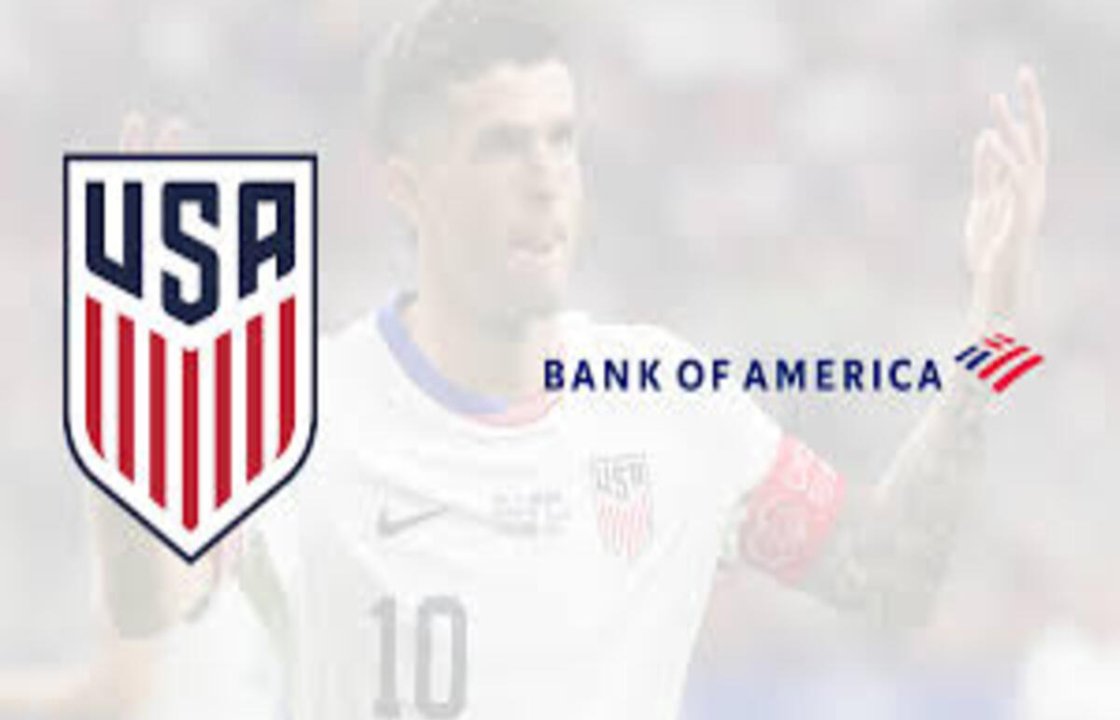The post-2024 era marks a turning point for American soccer, as major brands and sponsors invest heavily in the sport’s future, reshaping its commercial landscape and accelerating its rise to global prominence.
The New Wave of Corporate Investment in U.S. Soccer
In the aftermath of the 2024 Copa América and in anticipation of the 2026 FIFA World Cup, American soccer has entered a new chapter defined by unprecedented financial engagement from corporate partners. Companies that once viewed soccer as a niche market are now positioning themselves at the heart of its explosive growth. Among them, Bank of America’s partnership with U.S. Soccer stands as a milestone that reflects how deeply major corporations believe in the sport’s long-term potential in the United States.
This growing enthusiasm is not just about visibility—it’s about being part of a transformational moment. Soccer has become more than a sport; it’s a cultural movement that aligns perfectly with modern values such as diversity, inclusion, and global connection. For brands, associating with soccer means aligning with a generation that values these principles.
Corporate investment is no longer limited to sponsoring jerseys or tournaments. It’s now about building infrastructure, funding youth development, and supporting women’s soccer, which has gained tremendous momentum in recent years. The U.S. is seeing a soccer revolution, and companies are eager to be part of it.
Bank of America and the Strategic Shift in Soccer Sponsorship
The Bank of America–U.S. Soccer partnership, announced in 2024, exemplifies how major financial institutions are recognizing the marketing and community potential embedded in soccer. This partnership isn’t just a branding exercise—it’s a strategic alliance aimed at empowering local communities, expanding fan engagement, and reinforcing soccer as a unifying force across the nation.

Bank of America’s decision to join forces with U.S. Soccer also represents a shift toward values-driven sponsorships. The company has emphasized its commitment to supporting diverse communities and expanding opportunities for players from all backgrounds. Through grassroots programs and local initiatives, the partnership aims to strengthen soccer’s presence in underrepresented areas, ensuring that the sport continues to grow inclusively.
This approach mirrors a broader trend where corporate social responsibility (CSR) meets sports marketing. Brands no longer see success solely in viewership numbers or merchandise sales; they measure impact through community engagement, youth empowerment, and sustainability.
The Ripple Effect: How Sponsors Are Shaping the Future of U.S. Soccer
As more corporations step into the arena, the effects are rippling through every level of American soccer. Major League Soccer (MLS) clubs are witnessing a surge in sponsorship deals, from jersey partners to stadium naming rights. Global brands such as Adidas, Coca-Cola, and Apple are not only investing money but also technological expertise and marketing power.
Apple’s MLS Season Pass, for example, has revolutionized how fans watch and engage with the sport. Meanwhile, Adidas continues to drive innovation in apparel and footwear, ensuring players—from youth academies to professionals—have access to world-class equipment.
At the grassroots level, investment in youth development is booming. Companies are recognizing the power of connecting with families and young athletes who represent the next generation of consumers. This means more funding for academies, coaching programs, and tournaments that give aspiring players a pathway to professional soccer.
Equally important is the growing support for women’s soccer. Following the U.S. Women’s National Team’s global success, brands have realized the massive commercial and cultural potential of investing in female athletes. Sponsorships in the NWSL (National Women’s Soccer League) have reached record highs, with new clubs, higher salaries, and improved facilities becoming the new norm.
All of this investment points toward one thing: long-term sustainability. Soccer is no longer treated as a passing trend—it’s a strategic industry with cultural, social, and economic value.
The Road to 2026: Global Visibility and Economic Opportunity
The countdown to the 2026 FIFA World Cup, hosted jointly by the United States, Canada, and Mexico, is creating enormous excitement. For brands, this is more than a sports event—it’s a global marketing platform unlike any other. The U.S. will be at the center of the soccer world, and companies want to make sure they’re part of the narrative.
Sponsorships are being designed not just to reach fans in stadiums, but to create immersive digital experiences, community engagement campaigns, and sustainability initiatives that leave a lasting legacy.
Cities like Los Angeles, New York, Dallas, and Miami are already seeing infrastructure investments, from stadium upgrades to transportation improvements, much of it backed by private sponsors and corporate funding. The World Cup is projected to inject billions into the U.S. economy, and brands are positioning themselves to capture the energy and visibility that will come with it.
For companies, this investment also means brand loyalty and emotional connection. Soccer fans are known for their passion and community spirit—qualities that brands aim to harness by associating with the sport.
Beyond the Game: Soccer as a Platform for Social and Cultural Impact
What makes this era of investment truly transformative is that it goes beyond sports. Soccer has become a social platform, one that brings together people of all backgrounds and cultures. In a country as diverse as the United States, this inclusivity is invaluable.

Corporations are leveraging soccer’s cultural power to promote social initiatives such as gender equality, education, environmental awareness, and community development. Campaigns that highlight women’s empowerment, youth inclusion, and environmental sustainability are now common features of soccer sponsorships.
For instance, brands like Nike and Visa have used their partnerships with soccer organizations to promote gender equality in sports, while Pepsi and AT&T have invested in fan engagement programs that connect local communities to the game.
This convergence of sport, business, and social responsibility is redefining how we think about sponsorship. It’s no longer about a logo on a jersey—it’s about shaping culture and creating opportunities for the next generation.
The Future of Sponsorship: Innovation and Technology
Technology plays a central role in the future of brand involvement in soccer. As fan engagement moves increasingly toward digital platforms, companies are finding new ways to connect with audiences through data analytics, virtual reality, and AI-driven experiences.
Brands are now investing in smart stadiums, interactive apps, and performance technologies that enhance the viewing and playing experience. Artificial intelligence is helping clubs analyze fan behavior, while augmented reality allows brands to deliver immersive experiences that bridge the gap between the physical and digital worlds.
This technological evolution mirrors the broader modernization of soccer in the U.S.—a sport that is finally catching up with Europe and South America in both quality and innovation. The next few years will see even stronger collaboration between tech companies, financial institutions, and sports organizations, driving the industry into a new era of growth.
Connection with SIA Academy
At SIA Academy, we witness firsthand the importance of strategic investment in soccer’s future. Just as major brands are fueling the growth of the sport in the U.S., our academy invests in the development of young players through advanced training methods, modern technology, and a global approach to the game. We share the same vision that drives these corporate sponsors—creating pathways for growth, excellence, and opportunity. The support of brands and institutions mirrors what we strive for at SIA Academy: building a stronger, more inclusive, and innovative soccer culture that prepares athletes to succeed on and off the field.






